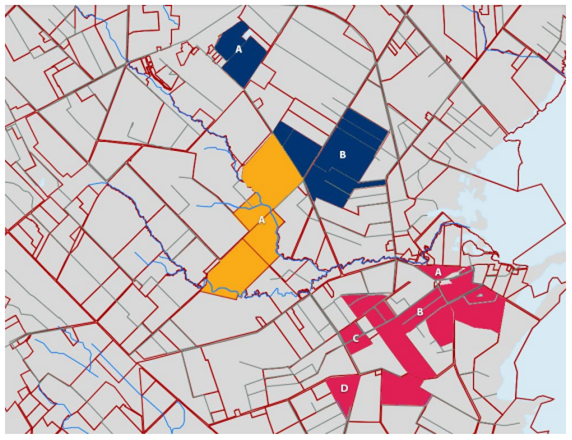Nitrogen cap
2 min read
Applying synthetic nitrogen fertiliser to grazed pasture is limited to 190 kilograms of nitrogen per hectare per year (kgN/ha/yr). Dairy farmers must also record and report their synthetic nitrogen fertiliser use annually.
The nitrogen cap (N-cap) rule is one of several regulations implemented through the National Environmental Standard for Freshwater (NESF). The rule controls the amount of synthetic nitrogen fertiliser that farmers may apply to land in pastoral land use.
Pastoral land use means the use of land for the grazing of livestock. It does not include the grazing on the stubble of a crop that has been harvested after arable land use.
On grazed pasture, you cannot apply more than 190kg of synthetic nitrogen per hectare per year (190kg N/ha/year) without resource consent. This limit applies both as an average for the farm, and to each hectare. You can apply more than this to your annual forage crops, but only if offset by applying lower amounts of pasture. The average across your combined pasture, forage crops and other grazed pastoral land can not exceed 190kg N/ha/year.
The N-cap applies to synthetic nitrogen fertiliser that is more than 5 percent nitrogen by dry weight, for example manufactured urea, diammonium phosphate and sulphate of ammonia.
The N-cap rule does not apply to:
The N-cap rule controls the application of synthetic nitrogen fertiliser based on ‘contiguous’ landholdings. For example, if the milking platform and support block are part of the same land area (i.e. adjoining or contiguous), the cap applies to both together. However, if a farm has a milking platform with a separate support block, the N-cap applies separately.
This is shown in the picture below:

Source: Nitrogen Cap guidance for dairy farms (Minsitry for the Environment)
The N-cap rule requires all dairy farmers to report their synthetic nitrogen fertiliser use annually by 31 July for the previous 12-month period (ending 30 June). One report per contiguous landholding is to be submitted.
Regional councils and fertiliser companies have worked together to create reporting tools for farmers:
You can also submit your N-Cap reporting via a shared regional council synthetic nitrogen use recording tool. You do not need to fill out this form if you have already done so through your fertiliser company. Note that the records you provide to your dairy company are separate from the N-cap reporting.
If your nutrient budget shows that you will exceed 190kgN/ha/year, you must either reduce your use or apply for a resource consent from your regional council.
Resource consents for breaches of the N-cap rule have non-complying status. This carries a higher test to meet under the Resource Management Act and may not be readily obtainable.
To be granted resource consent for the ongoing discharge of synthetic nitrogen exceeding the N-cap, the applicant must provide a report from a suitably qualified practitioner that includes:
The council can impose certain conditions relating to the baseline rate on any consent granted, along with reporting requirements. Any consent granted will have a term of no more than five years.
Please contact your regional council for more information.
Now’s the perfect time to check in, plan, and set up for a strong season. We’ve pulled together smart tips and tools to help you stay ahead all winter long.
Whether you prefer to read, listen, or download handy guides, we’ve got you covered with trusted tools to support your journey every step of the way.